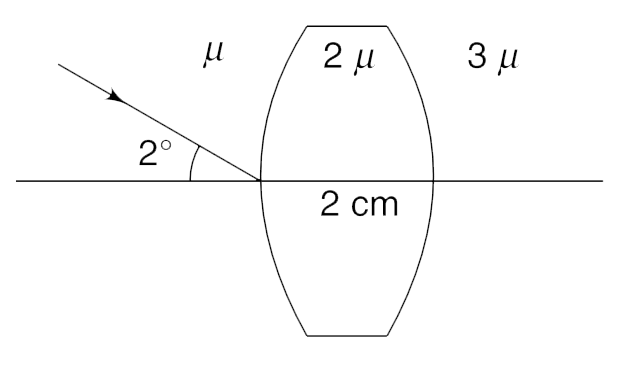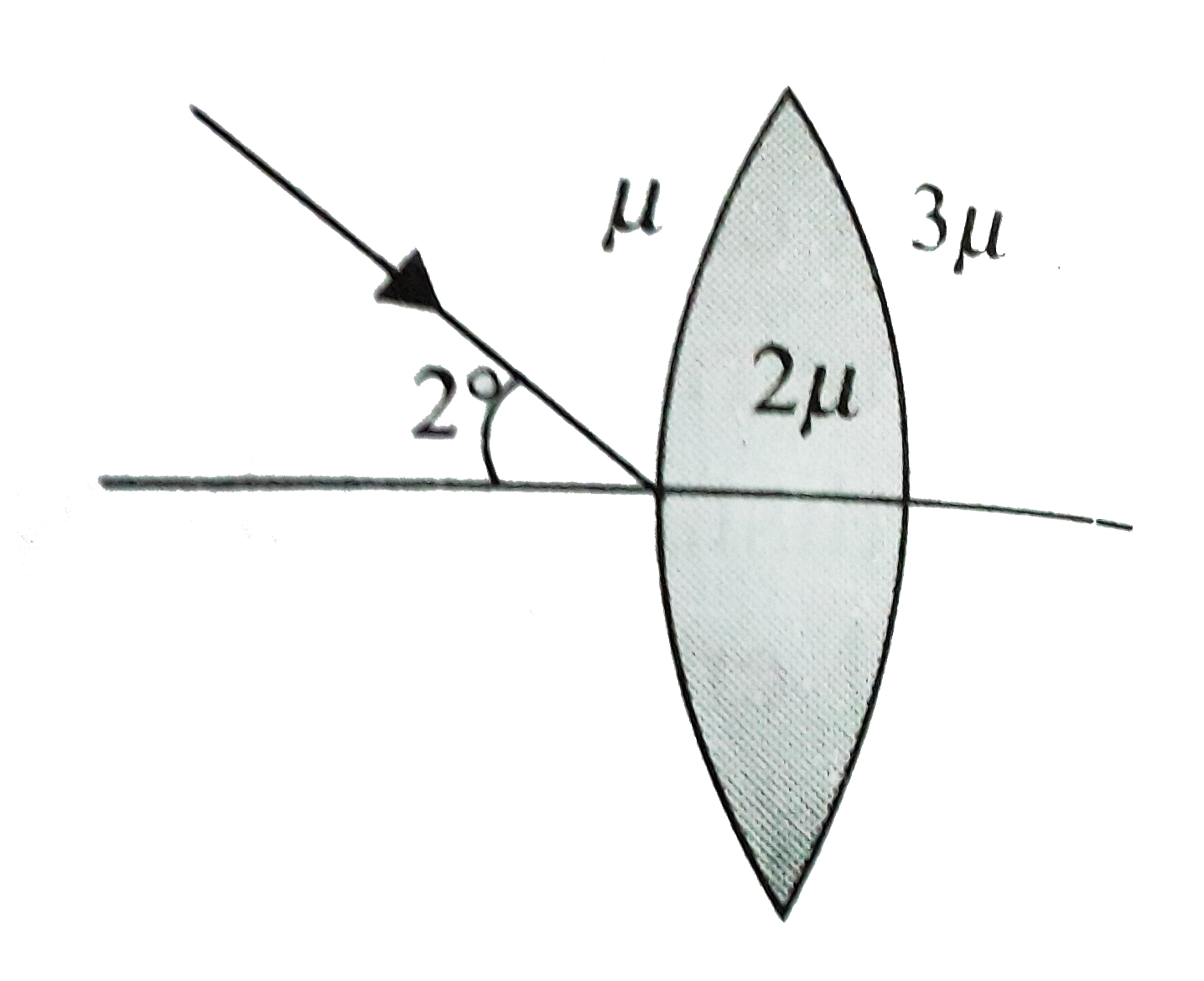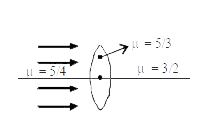An equiconvex lens has its two surfaces of radius of curvature R=10cm. Thickness of the lens at its centre is 2 cm. A light ray is incident making an angle of 2° with the optic axis of the lens. Find the angle that the emergent ray will make with the optic axis. The refractive index of all media is as marked in the Figure.

The correct Answer is:(815)∘
Step by step video, text & image solution for An equiconvex lens has its two surfaces of radius of curvature R = 10 cm. Thickness of the lens at its centre is 2 cm. A light ray is incident making an angle of 2° with the optic axis of the lens. Find the angle that the emergent ray will make with the optic axis. The refractive index of all media is as marked in the Figure. by Physics experts to help you in doubts & scoring excellent marks in Class 12 exams.
Topper's Solved these Questions
- BOOK - ARIHANTCHAPTER - GEOMETRICAL OPTICSEXERCISE - Level 39videos
GEOMETRICAL OPTICS
- BOOK - ARIHANTCHAPTER - GEOMETRICAL OPTICSEXERCISE - Level 39videos
GEOMETRICAL OPTICS
- BOOK - ARIHANTCHAPTER - ELECTROSTATICSEXERCISE - Level 359videos
ELECTROSTATICS
- BOOK - ARIHANTCHAPTER - MAGNETIC EFFECT OF CURRENTEXERCISE - Magnetic effect of Current45videos
MAGNETIC EFFECT OF CURRENT
Similar Questions
There is a glass (μ=1.5) biconvex lens of radius of curvature 5 cm and thickness of the lens is also 5 cm. An object is placed at a distance 20 cm from the front surface of lens. Locate its final image.
View SolutionA ray of light travelling in air falls on the surface of a transparent slab. The ray makes an angle of 45∘ with the normal to the surface. Find the angle made by the refracted ray with the normal within the slab. Refractive index of the material of the slab =√2.
 View Solution
View Solution
Knowledge Check
- Question 1 - Select One
A ray of light is incident at 65∘ on one face of a prism of angle of 30∘ and the emergent ray makes 35∘ with the incident ray. The refractive index of the prism is:
A1.812B1.414C1.5D1.33 - Question 2 - Select One
A ray of light is incident at 60∘ on one face of a prism of angle 30∘ and the emergent ray makes 30∘ with the incident ray. The refractive index of the prism is
A1.732B1.414C1.5D1.33 - Question 3 - Select One
A light ray hits the pole of a thin biconvex lens as shown in fig. The angle made by the emergent ray with the optic axis will be approximately
 A0∘B(1/3)∘C(2/3)∘D2∘
A0∘B(1/3)∘C(2/3)∘D2∘
An equiconvex lens of refractive index 1.5 has its two surfaces having radius of curvature of 30 cm. A point object has been placed on the principal axis at a distance of 60 cm from the lens. Find the distance of image from the lens formed by the rays which suffer refraction at first surface, reflection at second surface, again a reflection on the first surface and finally a refraction from the second surface.
View SolutionIf in a plano-convex lens, the radius of curvature of the convex surface is 10 cm and the focal length of the lens is 30 cm , then the refractive index of the material of lens will be
View SolutionA thin equi-convex lens having radius of curvature 10 cm is placed as shown in figure. Calculate focal length of the lens, if parallel rays are incident as shown.
 View Solution
View SolutionLight ray is incident on a prism of angle A=60∘and refractive indexμ=√2.the angle of incidence at which the emergent ray grazes the surface is given by
View SolutionLight ray is incident on a prism of angle A=60∘ are refractive index μ=√2. The angle of incidence which the emergent rays grazes the surface is given
View Solution
